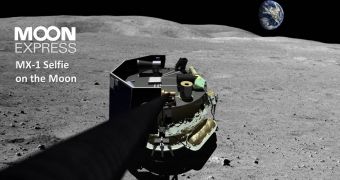According to officials at newly-founded, California-based private company Moon Express, a new robotic lander could make its way to the Moon as early as 2015. The spacecraft would have similar capabilities to larger missions developed by established space agencies, enabling it to be used for advanced scientific studies.
Moon Express recently released the blueprints it plans to use for building the new robotic lunar lander, which it calls MX-1. A series of computer renderings of what the spacecraft will look like, and some exploded views of major components, were also made public yesterday, December 5.
The company's current plans call for the first MX-1 to be launched into space by 2015. The spacecraft could have a number of uses, ranging from delivering payloads to the surface of the Moon to deploying cubesats and cleaning space junk from low Earth orbit. Servicing other satellites may be possible, too.
The lander is estimated to weigh a little less than 600 kilograms (1,320 pounds) when fully loaded. About three quarters of that weight will be accounted for by the fuel the spacecraft will need to make its landing on the lunar surface. The entire vehicle will be the size of a larger coffee table.
“We really have tried to create a multifaceted, flexible and scalable spacecraft that can be utilized by other people for a number of different business applications,” says the co-founder and CEO of Moon Express, Bob Richards, as quoted by Space.
He explains that a drastic decrease in weight was achieved partially by using only composite materials for the spacecraft, and partially by using its fuel tanks as a support structure, rather than creating a bus like typical satellites have. “With that, we got rid of a huge amount of mass,” Richards explains.
Such a small spacecraft will not be able to delivery payloads heavier than 60 kilograms (132 pounds) to the lunar surface. However, its light weight means that it will require no feet to land on. Moon Express officials say that the vehicle will be able to land on one of its fuel tanks, which will collapse to absorb the shock.
If successful in its endeavor, the team could win the $40 million (32.2 million euros) Google Lunar X Prize. A company can only win first place if their spacecraft reaches the Moon by late 2015. The vehicle has to deploy a rover capable of traveling at least 500 meters (1,650 feet) on the lunar surface, while relaying images to Earth.

 14 DAY TRIAL //
14 DAY TRIAL //